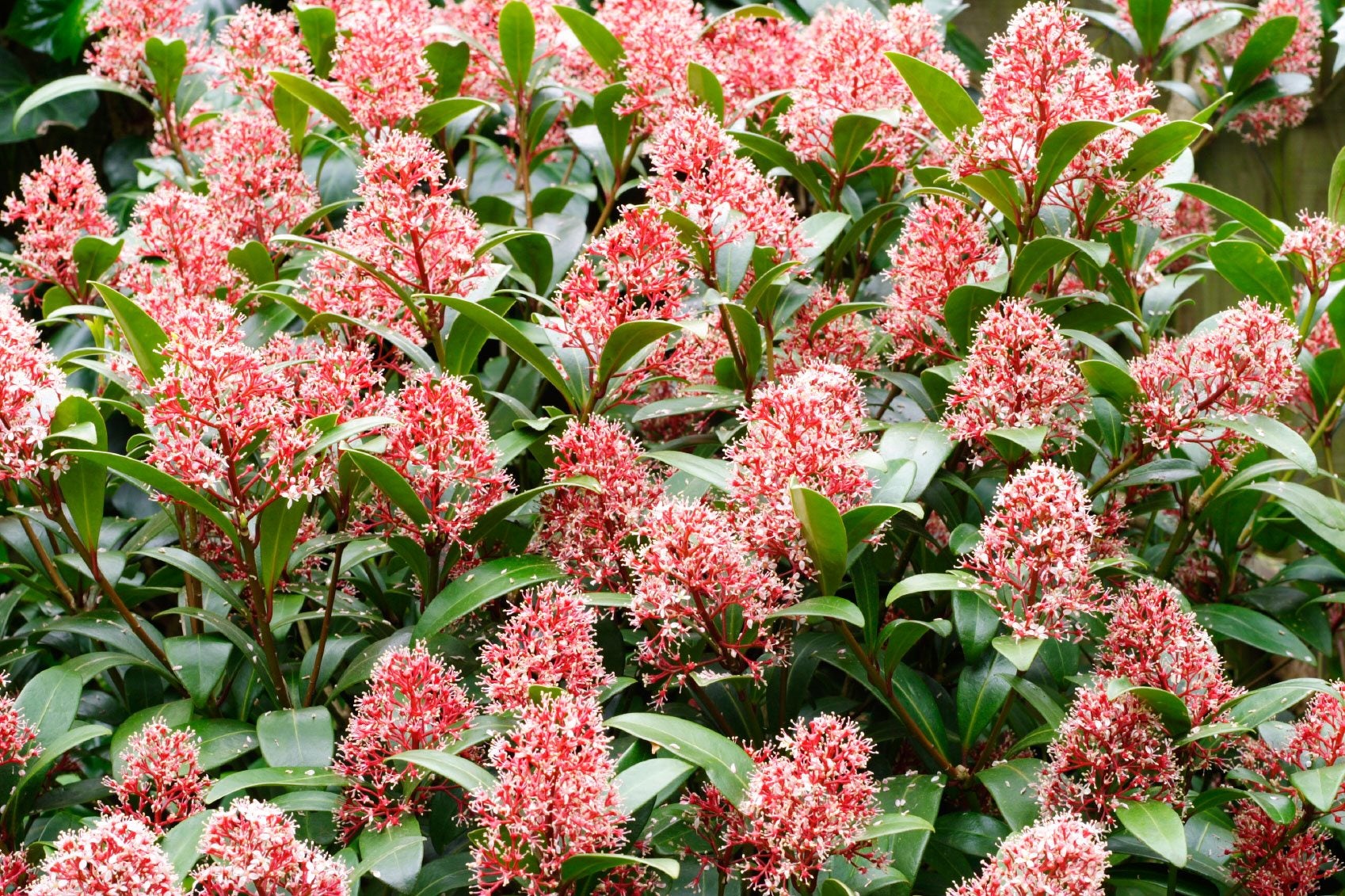Skimmia Plant Care: How To Grow Japanese Skimmia Shrubs


Japanese Skimmia (Skimmia japonica) is a shade-loving evergreen shrub that adds color to the garden nearly all year-round. Skimmia is at its best in semi-shady, woodland gardens. It is relatively deer-resistant, and the berries are highly attractive to hungry songbirds. Read on to learn more about this interesting plant.
Skimmia Information
Japanese Skimmia welcomes spring with reddish pink buds, which soon burst into masses of tiny, creamy white summertime blooms. If a male plant is nearby for pollination, female plants light up the landscape with bright red berries in fall and winter. Green tinted bark and leathery green leaves provide a backdrop for the colorful blooms and berries. This compact, slow-growing plant reaches a mature height of 5 feet (1.5 m.) and a spread of about 6 feet (2 m.). With all its beauty, however, you should bear in mind that all parts of the plant are poisonous if ingested.
Skimmia Growing Tips
Learning how to grow Japanese Skimmia is relatively easy enough. The ideal soil for Skimmia is moist and rich with a slightly acidic pH. A shovelful of manure or compost mixed into the soil at planting time gets the shrub off to a healthy start. Choose a planting location carefully, as Skimmia is bleached and faded by bright sunlight. Therefore, placing the shrub in an area with partial shade or only part sun will do the plant justice. Plant Skimmia so the top of the root ball is even with the surface of the soil. Be sure not to cover the top of the root ball with mulch or compost. If you have a female shrub and you want berries, you'll need to plant a male Skimmia nearby. One male can pollinate six females.
Skimmia Plant Care
Skimmia benefits from a fertilizer formulated for acid-loving plants, applied in late winter or early spring. Otherwise, the plant generally doesn't need supplemental fertilizer, but a feeding is called for if growth appears stunted or the foliage is pale green. Healthy Japanese Skimmia has no serious pest problems, but occasional scale or aphids are easily eliminated with insecticidal soap spray. Water as needed to prevent excessive dryness; dust and dry conditions can attract spider mites.
Skimmia Japonica Pruning
Skimmia's neat growth habit rarely requires pruning, but you can trim and shape the plant while it is dormant during the winter months. You can even bring a few sprigs indoors for holiday decorations. You can also trim the plant before growth appears in early spring.
Gardening tips, videos, info and more delivered right to your inbox!
Sign up for the Gardening Know How newsletter today and receive a free copy of our e-book "How to Grow Delicious Tomatoes".

A Credentialed Garden Writer, Mary H. Dyer was with Gardening Know How in the very beginning, publishing articles as early as 2007.
-
 Looking For Plants To Give You The Soft And Fuzzies? Try These 5 Fuzzy Leaf Plant Options
Looking For Plants To Give You The Soft And Fuzzies? Try These 5 Fuzzy Leaf Plant OptionsLovers of texture, drama, silver foliage and tactile plants will adore these special sensory garden additions. These fuzzy leaf plant options will leave you all aglow
By Susan Albert
-
 Get Ready For A Summer Of Hummers! Grow These Full Sun Hummingbird Plants and Flowers
Get Ready For A Summer Of Hummers! Grow These Full Sun Hummingbird Plants and FlowersIf you’re lucky enough to enjoy a sunny backyard, make sure you are maxing out on your pollinator opportunities and grow these full sun hummingbird plants and flowers
By Tonya Barnett